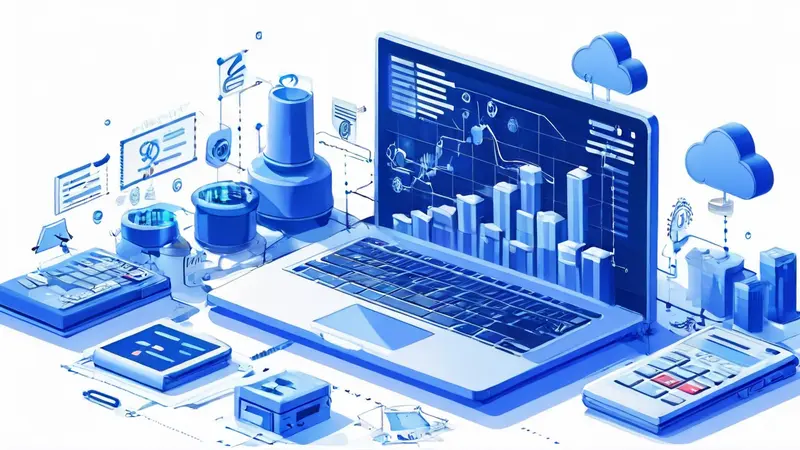The editor of Downcodes brings you a comprehensive interpretation of software and hardware development. Software and hardware development is a complex and important field that integrates multidisciplinary knowledge such as electrical engineering and computer science, as well as project management and team collaboration skills. This article will delve into all aspects of hardware development, software development, and the integration of the two, and answer some common questions to help you fully understand the process, skill requirements, and application areas of software and hardware development.

Software and hardware development is the integration of software development and hardware development, covering a series of processes from hardware design, manufacturing, and testing to software programming, application, and update. In this process, developers not only need to have multi-disciplinary knowledge such as electrical engineering and computer science, but also need to master project management and team collaboration skills.
In software and hardware development, hardware is the foundation, and software is the soul that gives the hardware functions. Only when hardware and software are closely integrated can powerful, efficient, and user-friendly products be created. For example, a smartphone is a good example of software and hardware development. Its hardware includes processors, memory, batteries, etc., while software includes operating systems, applications, etc.
Hardware development refers to the process of designing and manufacturing computer hardware, including major components such as processors, memory, hard drives, and graphics cards, as well as peripherals such as mice, keyboards, and monitors. Hardware developers usually need to have relevant backgrounds in electronic engineering, computer engineering, etc., and be able to understand and apply relevant electronic principles and device design concepts.
Hardware design: Hardware design is the first step in hardware development, mainly designing circuit boards, integrated circuits and other hardware components. During the design process, engineers need to consider factors such as hardware performance, power consumption, cost, and reliability.
Hardware manufacturing: Hardware manufacturing is the processing of various electronic components and materials into hardware products through cutting, welding, assembly and other means according to design drawings. During the manufacturing process, developers need to adhere to strict quality control and testing procedures to ensure the performance and stability of the hardware.
Software development refers to the process of writing, testing, maintaining and updating software, including operating systems, applications, drivers, etc. Software developers usually need to have computer science, software engineering and other related backgrounds, and be able to understand and apply relevant programming languages and software design principles.
Software programming: Software programming is the core of software development. It mainly uses programming languages (such as Java, C++, Python, etc.) to write code to achieve predetermined functions. During the programming process, developers need to abide by the principles and practices of software engineering and write high-quality, maintainable code.
Software testing: Software testing is the process of checking whether the software meets expected functions and performance, including unit testing, integration testing, system testing, etc. During the testing process, developers need to design and execute test cases, find and fix bugs, and improve software stability and user experience.
Software and hardware integration is the last step in software and hardware development. It mainly installs software on hardware and schedules the work of the hardware through the operating system to achieve predetermined functions. During the integration process, developers need to deal with compatibility and performance issues between software and hardware to ensure stable operation and excellent performance of the product.
Software and hardware compatibility: Software and hardware compatibility refers to whether the software can run normally on specific hardware. Developers need to test various hardware platforms to optimize the performance and stability of the software.
Software and hardware performance optimization: Software and hardware performance optimization refers to improving product performance by adjusting the configuration and parameters of software and hardware. During the optimization process, developers need to have a deep understanding of the performance limits of hardware and performance bottlenecks of software.
In general, software and hardware development is a complex process involving multiple disciplines and skills, requiring developers to have deep professional knowledge and rich practical experience. With the development of science and technology, software and hardware development will become more and more important, having a profound impact on human life and work.
1. What are the common application areas of software and hardware development?
Software and hardware development involves multiple application fields, including but not limited to smartphones, computers, embedded systems, cloud computing, Internet of Things, etc. Through software and hardware development, various functions can be realized, such as operating system development, application development, circuit design, etc.
2. What is the process of software and hardware development?
The software and hardware development process generally includes requirements analysis, system design, development and implementation, testing and deployment. In the requirements analysis stage, developers communicate with customers to clarify project requirements; in the system design stage, they design the architecture and processes of the software and hardware systems according to the requirements; in the development and implementation stage, they write code, design circuits, etc.; in the testing stage, they verify the software and hardware the functionality and performance of the system; and finally, deploying the system into the target environment.
3. What are the skill requirements for software and hardware development?
Software and hardware development requires mastering a variety of skills, such as programming languages (such as C, C++, Python), circuit design, embedded system development, algorithm design, etc. In addition, problem-solving skills, team spirit and communication skills are also required.
I hope the analysis by the editor of Downcodes can help you better understand software and hardware development. If you have any questions, please feel free to ask!